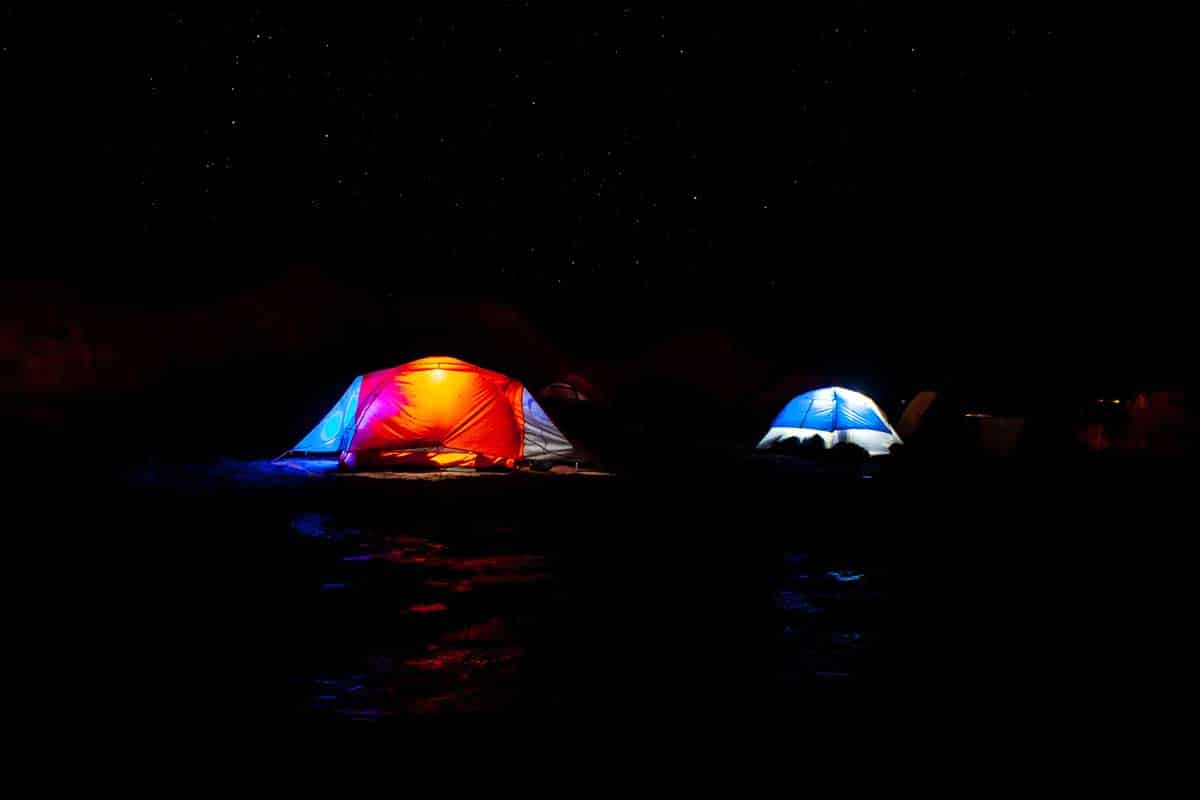
Jump to a section:
Outdoor product companies—from manufacturers of hiking gear and camping tents to sellers of fishing equipment, kayaks, or mountain bikes—cater to consumers who love exploring nature and pushing their limits outside. With the rising popularity of outdoor activities, competition for brand attention can be intense. PPC advertising on Google Ads is a prime way to reach adventure-seekers exactly when they search “best camping tent,” “hiking boots sale,” or “lightweight sleeping bag.”
However, marketing gear for the outdoors demands careful differentiation. Consumers weigh durability, weight, and price while also seeking brand trust and performance. This article details how to build potent PPC campaigns for outdoor gear—segmenting ads around activity type (camping, climbing, fishing), emphasizing product warranties or field-testing, and leveraging remarketing to capture repeat business from enthusiasts who update equipment seasonally. Coupled with thorough tracking and compliance with any product or promotional disclaimers, your brand can stand out in a dynamic and experience-driven marketplace.
Key PPC Challenges
- Product & Activity Variety Outdoor products range from high-end expedition tents to basic casual camping gear, from pro-level mountaineering boots to everyday day-hike shoes. Ads must reflect each audience’s skill level and budget.
- Seasonality & Weather Impact Spring/summer often spikes demand for camping or water sports gear; winter may see surges in ski or snow gear. PPC budgets must adapt to these cyclical patterns.
- High Competition from Big Brands Established labels (The North Face, REI, Patagonia) or large e-commerce platforms (Amazon) can overshadow smaller specialized companies. Bidding on general keywords can be costly.
- Need for Product Credibility & Tech Outdoor enthusiasts value product quality, lightweight materials, waterproof or windproof features, and brand performance. Ads and landing pages must highlight reliability or field testing.
- Longer Decision Cycle & Gear Research Some customers conduct extensive research on major purchases (e.g., advanced tents or mountain bikes). They may compare multiple brands, read reviews, or watch gear demos before buying.
Custom PPC Strategies
- Segment Ads by Activity & Gear Category
- What It Entails: Separate campaigns for camping (tents, sleeping bags), hiking (footwear, backpacks), water sports (kayaks, paddleboards), or climbing (ropes, harnesses).
- Why It Works: Each activity has unique features or brand preferences. Tailored ads address the specific gear needs of those enthusiasts.
- Highlight Tech & Quality
- What It Entails: If your brand uses advanced materials (GORE-TEX®, carbon fiber) or has special design patents, mention them in ad copy. Possibly show lab or field test results.
- Why It Works: Outdoor fans often pay more for proven durability or weight savings. Showcasing your gear’s unique selling points can justify a premium price.
- Promote Seasonal Sales & Bundles
- What It Entails: Offer “Spring Camping Bundles,” “Back-to-School Outdoor Gear,” or “Winter Ski Sale.”
- Why It Works: Ties in with seasonal demands. Bundling or discounting relevant items (tent + sleeping bag + pad) can upsell to a higher cart value.
- Leverage Influencers & Adventure Content
- What It Entails: If you partner with known adventurers or sponsor expeditions, incorporate their endorsements or achievements in your ads. Possibly link to short videos.
- Why It Works: Outdoor gear credibility thrives on real-world testing. Testimonials from pro climbers or hikers can sway enthusiasts who want proven performance.
- Offer Warranties & Trial Periods
- What It Entails: Ads referencing “Lifetime warranty,” “30-day return if not satisfied,” or “Test it in the wild.”
- Why It Works: Eases anxiety about product performance. If your gear truly excels, a robust guarantee fosters trust and quick purchase decisions.
Keyword Strategy
- Core Gear Terms: “camping tent for sale,” “backpacking sleeping bags,” “hiking boots men’s/women’s,” “mountain bike helmet.”
- Activity-Specific: “climbing rope for beginners,” “kayak paddle carbon fiber,” “snowboard goggles sale,” “fishing rod spinning reel.”
- Brand & Model Searches: “Patagonia jacket sale,” “Osprey backpack deals,” “Garmin outdoor watch discount,” “Coleman camping stove.”
- Value & Quality Queries: “lightweight hiking gear,” “ultra-durable climbing harness,” “best waterproof jacket,” “cheap tent under $100.”
- Negative Keywords: “outdoor product design jobs,” “DIY gear instructions,” if not relevant to direct sales.
Ad Copy & Extensions
- Emphasize Durability & Performance
- Headline Examples: “Conquer the Trails—Ultralight Tents,” “Waterproof Gear for Extreme Adventures,” “Built to Last: Premium Hiking Boots.”
- Description: “Trusted by pros—experience unmatched comfort & durability. Free shipping over $X—shop now!”
- Why It Works: Outdoor enthusiasts prioritize quality. Show your gear’s endurance, technical features, or pro endorsements.
- Use of Extensions
- Sitelinks: “Shop Tents,” “Backpacks & Packs,” “Footwear,” “Clearance Deals,” “Customer Reviews.”
- Callout Extensions: “Free Returns,” “Lifetime Warranty,” “Eco-Friendly Materials,” “Expert Support.”
- Structured Snippets: “Activities: Camping, Hiking, Climbing, Skiing, Kayaking.”
- Compelling CTAs
- Examples: “Gear Up Now,” “Start Your Next Adventure,” “Stay Warm & Dry—Shop Today,” “Claim Our Spring Sale.”
- Why They Work: Encourages immediate action. Taps into the excitement of planning adventures.
- Highlight Social Proof
- What It Entails: “Over 10k positive reviews,” “Award-winning gear from Outdoor Mag,” or mention environmental stewardship if it resonates with your brand.
- Why It Works: Outdoor community places importance on brand reputation, user experiences, and ethical production.
Landing Page Best Practices
- Segment by Activity & Gear
- What It Entails: If running an ad for “climbing gear,” direct to a page showing harnesses, carabiners, ropes, with specs. Possibly share tips or recommended kits.
- Why It Works: Increases relevance, fosters higher conversions. Reduces confusion by focusing on that user’s interest right away.
- Detailed Product Specs & Testing
- What It Entails: Each item should have bullet points about weight, dimensions, materials, waterproof ratings, temperature range, etc. Possibly link to field test results or user videos.
- Why It Works: Outdoor gear buyers do thorough research. More detail means fewer hesitations or abandoned carts.
- Visually Appealing Content & Authentic Imagery
- What It Entails: High-res photos or short videos showing gear in real outdoor scenarios. Possibly embed an adventurer’s testimonial or influencer usage example.
- Why It Works: Evokes the spirit of adventure. Real-world usage shots help them envision the product in action, boosting confidence.
- Clear Return & Warranty Policy
- What It Entails: State return windows, warranty coverage, or repair services. Provide a link to full terms.
- Why It Works: Minimizes friction. Many hesitate on big-ticket gear if uncertain about service or exchange policies.
Bidding Strategies
- Manual CPC for Brand & High-Value Terms
- What It Entails: Terms like “Patagonia jacket sale,” “best ultralight tent,” or “climbing rope discount” can attract serious buyers but have higher CPC. Manually bidding preserves ROI control.
- Why It Works: These queries are high-intent from shoppers likely to buy once they find the right product at the right price.
- Enhanced CPC (ECPC)
- What It Entails: Google adjusts your manual bids within a set range to capture more converting clicks.
- Why It Works: Good intermediate step if you track e-commerce or lead form conversions, pushing more conversions while keeping cost in check.
- Target ROAS or Target CPA
- What It Entails: If you know average order value or profit margin on gear, you can define a target return on ad spend or cost-per-acquisition.
- Why It Works: Automates scaling. Perfect once historical data clarifies how many clicks lead to actual sales.
- Seasonal Budget Adjustments
- What It Entails: Increase spend before hiking or camping season, or leading up to major gear-intense periods (holidays, Black Friday). Decrease in off-season if sales dip.
- Why It Works: Syncing budget with user demand ensures you’re visible at peak times, capturing the largest share of high-intent shoppers.
Geo-Targeting & Scheduling
- National vs. Regional Coverage
- What It Entails: If you ship nationwide, keep broad targeting. If only local or regional distribution, limit to those states or zip codes.
- Why It Works: Minimizes wasted clicks from unreachable areas. Also, emphasize fast shipping in certain regions if relevant.
- Ad Scheduling for Shopping Hours
- What It Entails: Some outdoor enthusiasts shop evenings or weekends. If your support or chat team is active then, run ads strongly at those times.
- Why It Works: Real-time customer service can finalize a purchase, especially if they have questions about size, usage, or shipping times.
- Competitor Bidding
- What It Entails: Bidding on competitor brand names or certain big-box retailers. Possibly highlight your gear’s unique features or better pricing.
- Why It Works: Reaches customers comparing multiple brands or stores, offering a reason to pick your specialized approach over large, generic retailers.
Remarketing Tactics
- Product-Focused Ads
- What It Entails: If a user viewed a specific tent or hiking boot, retarget them with that exact product or a similar style. Possibly show a discount if feasible.
- Why It Works: Reminds them of the exact item they liked. Personalized ads drive higher click-through and conversion rates.
- Seasonal or Activity Reminders
- What It Entails: Show display ads for winter gear to visitors who browsed skiing equipment or mention new spring arrivals if they searched for camping gear.
- Why It Works: Ties in with upcoming seasonal activities, prompting them to finish buying before the season kicks in.
- Bundle Suggestions & Upsells
- What It Entails: If they purchased a sleeping bag, retarget them with offers for a matching tent or sleeping pad. Could highlight an exclusive discount for related gear.
- Why It Works: Encourages a bigger purchase from loyal or engaged customers. Many realize they also need complementary items once reminded.
Conversion Tracking & Analytics
- E-Commerce Purchases & Order Value
- What It Entails: Tag your site’s checkout confirmation page, capturing transaction amounts for each sale.
- Why It Works: Ties ad spend to real revenue. You can calculate ROAS for each campaign or product line, adjusting accordingly.
- Lead Forms or Quote Requests
- What It Entails: If you do custom orders or group sales, track “Request a Quote” forms.
- Why It Works: Some advanced or specialized gear might be custom. This approach measures B2B or group-sales leads.
- Phone Calls or Live Chat
- What It Entails: Use dynamic phone numbers to log calls from ads. If chat is used, track completed sessions that result in product details shared or purchase links.
- Why It Works: Some buyers want verbal confirmation about gear specs or shipping. Linking calls to keywords shows which ads produce engaged leads.
- Offline Event Sales
- What It Entails: If you sponsor or attend outdoor expos, gather lead info from visitors who discovered you online, then import those “offline conversions.”
- Why It Works: Clarifies the synergy of online ads driving booth traffic, eventually leading to in-person sales or brand loyalty.
Regulatory & Industry Considerations
- Environmental & Material Claims
- If claiming “eco-friendly” or “sustainably sourced,” ensure it’s accurate (like recycled content or certified standard).
- Safety & End-Use Disclaimers
- Gear for climbing or kayaking might need disclaimers about safe usage or skill levels. Ads should not overpromise safety.
- Brand & Trademark
- If referencing brand names (GORE-TEX®, Vibram®), follow trademark rules in ad copy.
- Warranty & Return Policies
- Any mention of warranties must be accurate. If referencing “Lifetime Warranty,” disclaim normal usage conditions.
Conclusion
With an optimized PPC strategy, outdoor product companies can cut through the noise and capture the attention of adventurers, weekend campers, and dedicated hobbyists. By segmenting ads according to activity (camping, climbing, hiking, fishing) and highlighting product benefits—such as durability, lightweight design, or advanced materials—brands can appeal to the practical and emotional sides of gear buyers.
Remarketing preserves engagement with buyers who research for weeks or months, finalizing a purchase only after comparing multiple brands. Meanwhile, conversion tracking clarifies which campaigns yield the greatest sales, ensuring your budget flows to top-performing keywords or gear categories. Adhering to disclaimers about product usage or environmental claims cements your credibility and trust. Ultimately, these best practices ensure your outdoor gear stands out as reliable, high-performance, and well-suited to the next great adventure.
Google Ads Cheat Sheet for Outdoor Product Companies
| PPC Strategy & Price | Strategic Benefits | Custom Strategies |
|---|---|---|
| Segment by Activity / Gear Category Price Range: $800–$2,500/month |
– Targets hikers, campers, climbers, etc. distinctly – Matches specific product needs & skill levels |
– Separate campaigns for “Camping Tents,” “Backpacks,” “Climbing Gear,” “Kayaks” – Ads referencing core features & brand |
| Highlight Tech & Field-Testing Price Range: $500–$1,500/month |
– Appeals to performance-driven outdoors enthusiasts – Differentiates from generic or lower-quality gear |
– “Waterproof & lab-tested,” “used by pro athletes” – Emphasize advanced materials, e.g., GORE-TEX® |
| Seasonal Sales & Bundles Price Range: $400–$1,200/month |
– Encourages larger purchases or gift season buys – Stimulates demand in prime activity months |
– “Fall Camping Sale—Save 20%,” “Holiday Gift Sets” – Bundled gear deals (tent + sleeping bag + pad) |
| Warranties & Trials Price Range: $300–$900/month |
– Eases buyer risk for costly gear – Encourages trial or brand loyalty |
– “Lifetime Guarantee on Ropes,” “Test our boots risk-free for 30 days” – Prominent disclaimers for usage conditions |
| Remarketing for Seasonal Upgrades Price Range: $200–$600/month |
– Re-captures users who browsed but didn’t buy – Reminds them of new arrivals or complementary gear |
– “Complete your hiking setup—get a matching backpack!” – Seasonal ads for new arrivals or price drops |


